The jasmine plant has become a favorite among gardeners worldwide. There are distinguished types of jasmine flowers out there. This beautiful vine produces delicate, fragrant flowers that attract many insects.
If you are looking for an indoor plant that requires little maintenance, then you should consider getting yourself some jasmine plants.
But which kind of jasmine should you get? There are so many different types of jasmine plants, each with its fragrance, look, color, and a huge range of other features. It can be pretty overwhelming just picking a few for your home or backyard.
Well, that’s what this article is for! We’re going to cover some of the most popular species of jasmines out there so that you can decide which ones are your favorite, and which ones you might want to try growing for yourself!
1. Common Jasmine

One of the oldest varieties of jasmine that you can find out there. Whilst we know that it was likely first cultivated somewhere in the Middle East in the third century CE, we don’t know where exactly it comes from.
Common Jasmine plants are beautiful flowers that grow in most parts of the world. They’re one of the best-known fragrant plants in Asia and Europe.
Whilst they are originally from the Middle East and West Asia, they have since become naturalized in many places in the surrounding regions and Southern Europe.
It isn’t uncommon to find the common Jasmine in many spots across Spain, Italy, Serbia, and even in the United States, where the warm climate of Florida allows it to thrive.
The scent of jasmine has also been found to soothe headaches, calm emotions, and help induce more restful sleep as well.
To keep jasmine blooming year-round, water it every week during the growing season. If necessary, fertilize it once a month.
And make sure to keep it free of weeds and pests! Jasmine doesn’t harm animals. But, it does contain chemicals that can irritate the eyes.
Related: A Whole New World: 10 Different Types Of Jasmine Plant
2. Arabian Jasmine

The Arabian Jasmine plant is an evergreen flowering shrub native to the mountains of southwestern Asia. It grows up to 6 meters tall and bears small fragrant flowers in early spring.
The leaves are opposite and oval-shaped.
It is one of the most popular plants in the world. This plant is known for its fragrance. Its scent is similar to those of orange blossoms.
This plant has a lot of uses. For example, it can be used in landscaping, flower arrangements, food products, perfumes, cosmetics, natural remedies, etc. It can grow well in many climates.
Jasmine tea is made from its leaves. Arabian jasmine tea is usually drunk after meals. It is said to improve digestion and prevent constipation.
It can also be used to treat menstrual cramps, skin rashes, and headaches.
3. Spanish Jasmine

Spanish jasmine plants are native to South Asia and the Middle East. They grow up to 2 to 4 meters, or 6 to 12 feet tall, and produce large white flowers.
In general, Spanish jasmine plants do well indoors. This popular houseplant grows easily in most soils and requires little water. Jasmine is suitable for indoor spaces where humidity levels are moderate.
Spanish jasmine plants are beautiful and fragrant flowers that grow in tropical climates.
They can be found in many parts of California, including San Diego, Los Angeles, Riverside, Orange County, San Bernardino, Ventura, Santa Barbara, Fresno, and Sacramento.
In addition to its beauty, this flowering plant is used for medicinal purposes. The leaves contain essential oils that are believed to possess anti-inflammatory properties.
People use these leaves to treat skin conditions such as eczema, psoriasis, dermatitis, and rashes.
It is for these medical purposes that the Spanish Jasmine has been listed as a protected species of plant, both when it is domesticated, and where it is found in the wild.
4. Showy Jasmine
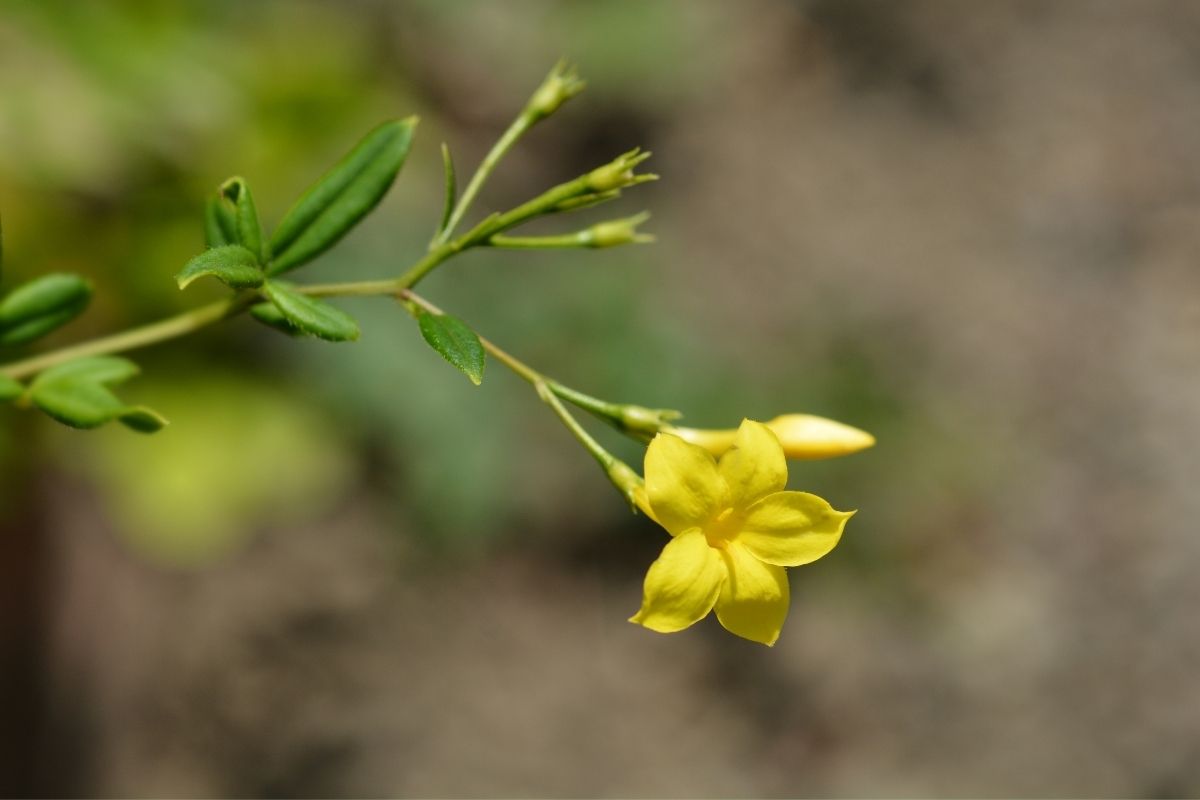
Jasmine plants are beautiful flowers that come in many different colors. They’re one of the most popular houseplants because they attract butterflies and hummingbirds.
Ironically, despite what the name of this species would imply, the flowers on this jasmine plant, whilst very beautiful, actually only grow to about an inch in diameter.
Whilst a popular indoor plant, this variety is most often grown for its ability to climb high. They are a popular variety to grow on trellises.
If you do not have a dedicated trellis, you can prop up the stems using bamboo sticks or small stones.
Be careful not to overdo it, though, as too much support could cause the stem to not flourish as well as it otherwise might.
5. Winter Jasmine
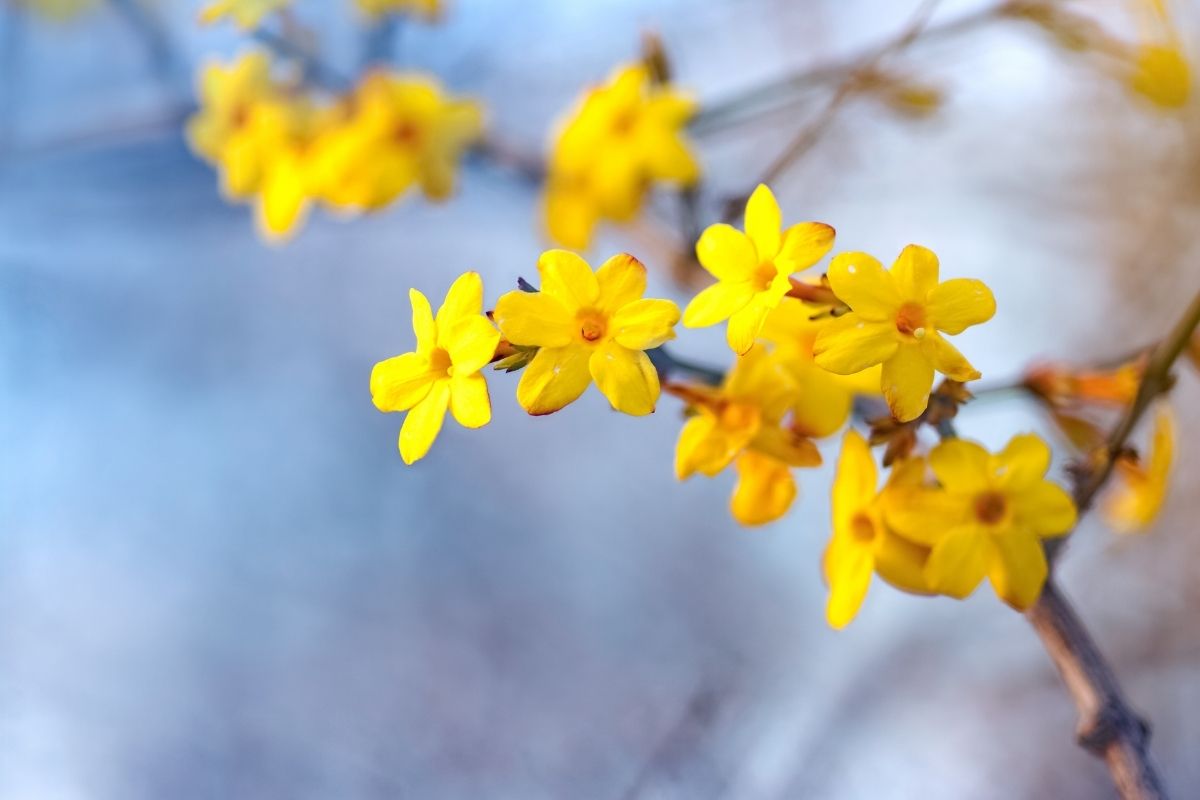
A native of many regions of China, winter jasmines have been grown and cultivated in many other parts of the world over the centuries. It is just as likely to be found in France and Tennessee as it is to be found in Gansu and Tibet.
Winter jasmine plants are beautiful additions to any home. They are fragrant and attractive, and they bloom in the winter months. They can grow anywhere, indoors or out, and they require little care.
Winter jasmine is often grown as an annual in colder climates. However, it can be considered a perennial for areas where temperatures do not drop below freezing.
Related: 27 Fascinating Types Of Jasmine Plants(Including Photos)
6.Royal Jasmine
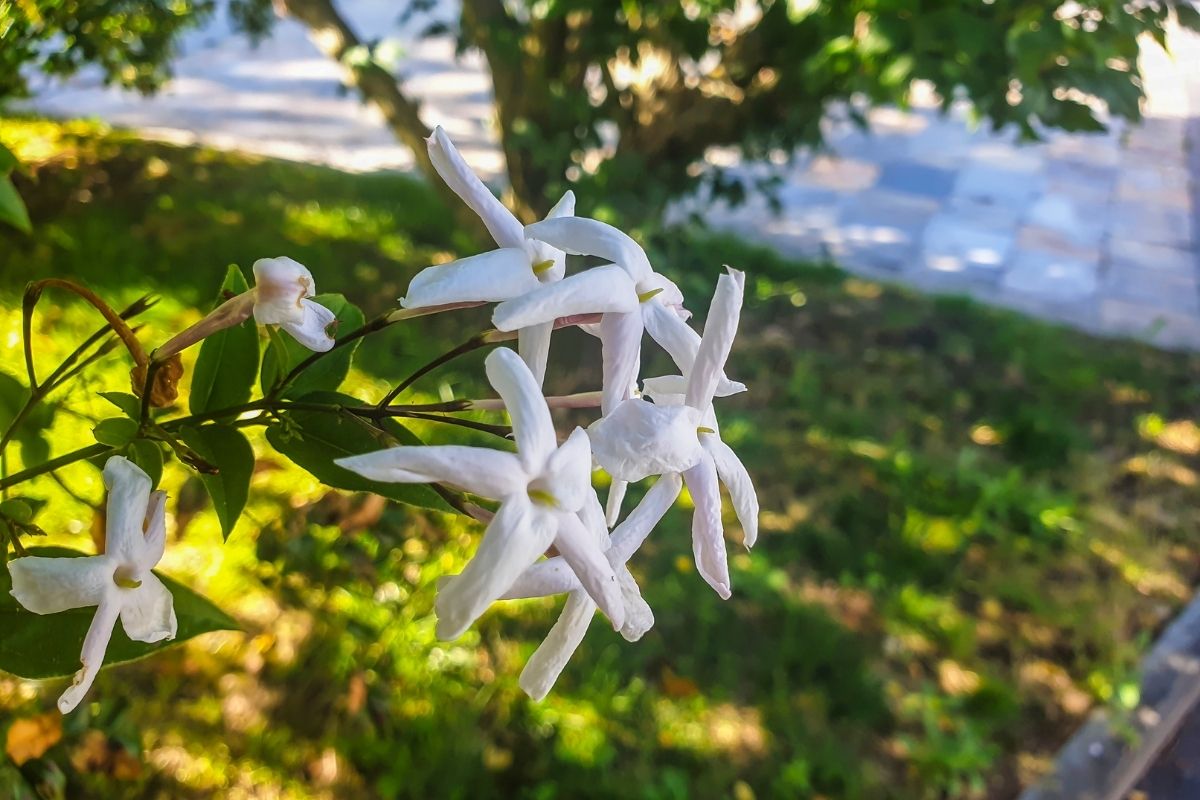
One of the fastest-growing varieties of jasmine in the world, Royal jasmine are often some of the biggest around too, easily growing to heights of 8 feet and beyond if given the appropriate support or trellis to climb up.
This plant is native to Asia, where it grows wild. It was brought over to Europe and America by early settlers.
Some believe that the name “royal jasmine” came from the fact that this plant was used by royalty in China and Japan’s long history.
The royal jasmine plant is a popular houseplant, and it’s regularly used for indoor decoration and landscaping.
They grow well indoors and outdoors, so there are no problems with temperature extremes. They require little care and maintenance once they’re established.
Most people prefer to buy an established plant or a plant that has been grown from a cutting, rather than grow their plant from a seed.
This is partly due to their fast growth cycle, making them easy to propagate from a single parent plant.
Still, it can be very rewarding to grow these plants from a little seedling, so don’t discount it if you are looking for one of these beautiful plants.
7. Dwarf Jasmine
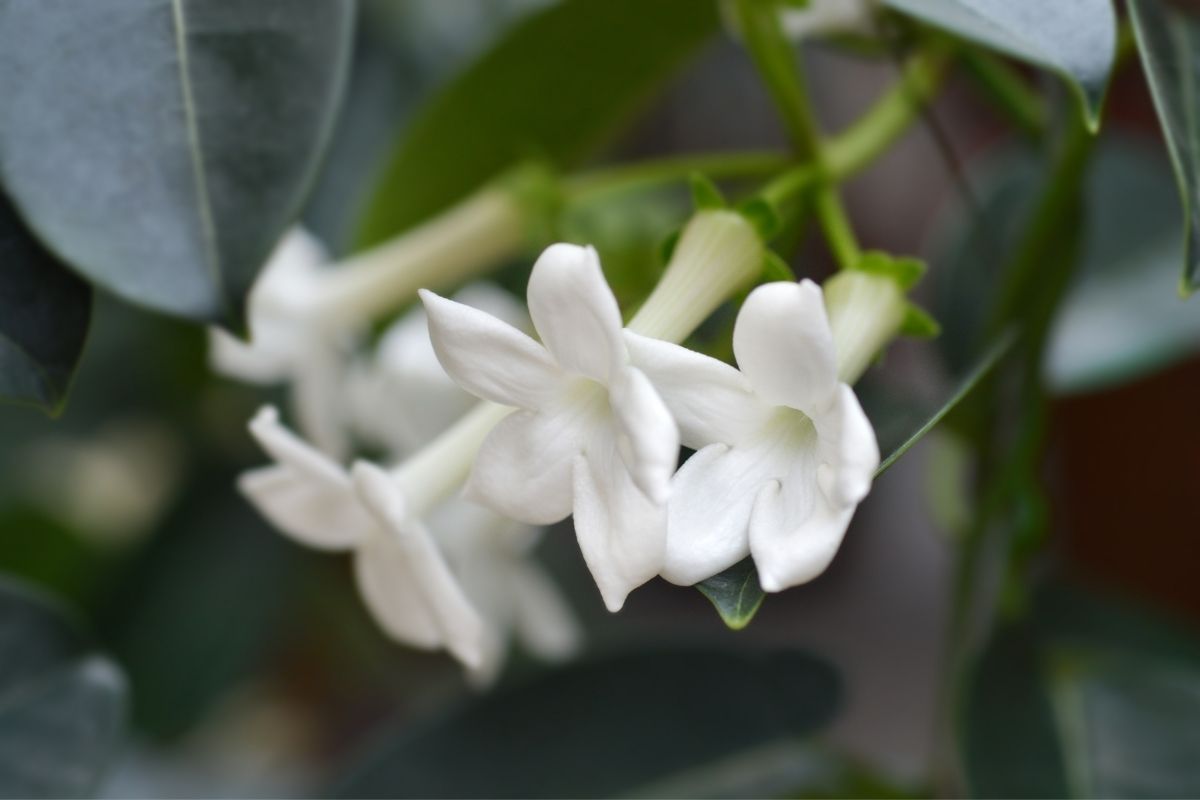
Also known as the Asiatic jasmine, it shouldn’t come as a surprise to find that this jasmine plant, like many others, is a native of many regions in Central and South Asia.
When the dwarf jasmine plant blooms, it produces tiny white flowers that resemble miniature bells. These flowers are about 1 inch across, making them very similar to other varieties, such as the Showy jasmine.
Ironically, the dwarf jasmine is one of the largest species of jasmine. Heights of over 20 feet are not uncommon where it is found in the wild.
Thanks to its woody stem, it is a climbing plant that has a great deal of strength to gasp on to other plants and structure in the way that many other species of jasmine plants do.
8. Wild Jasmine
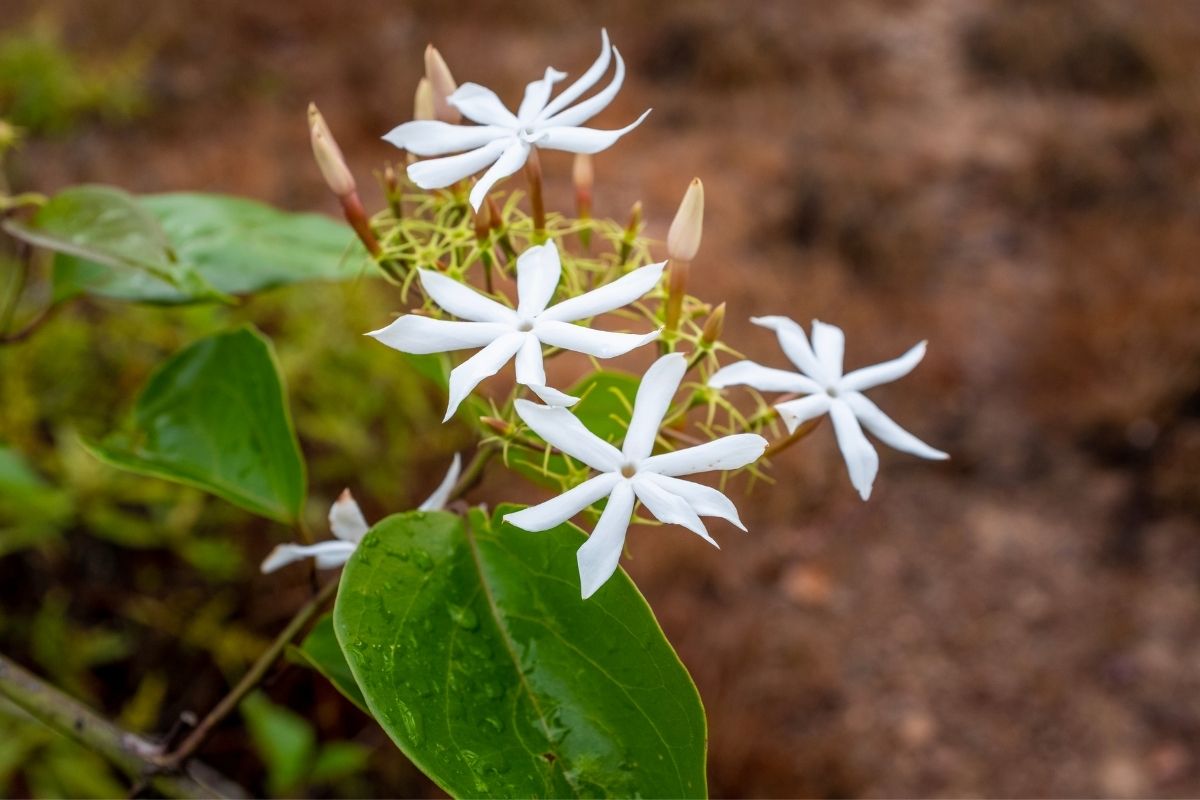
Wild Jasmines are native plants that grow in South and Southwestern Asia. They bloom each spring, and the flowers smell wonderfully fragrant!. Wild Jasmines are perfect for adding a soft floral smell to your home.
You can use them to create floral arrangements, potpourri, and sachets. You can also use them to attract butterflies and hummingbirds to your backyard.
This also makes them ideal for attracting wildlife to your yard.
When growing them outdoors, remember that wild jasmines require bright indirect light, humidity levels between 50% and 70%, temperatures between 60°F and 75°F, and soil rich in humus. Also, keep in mind that wild jasmines need a lot of space to grow properly.
9. Pink Jasmine
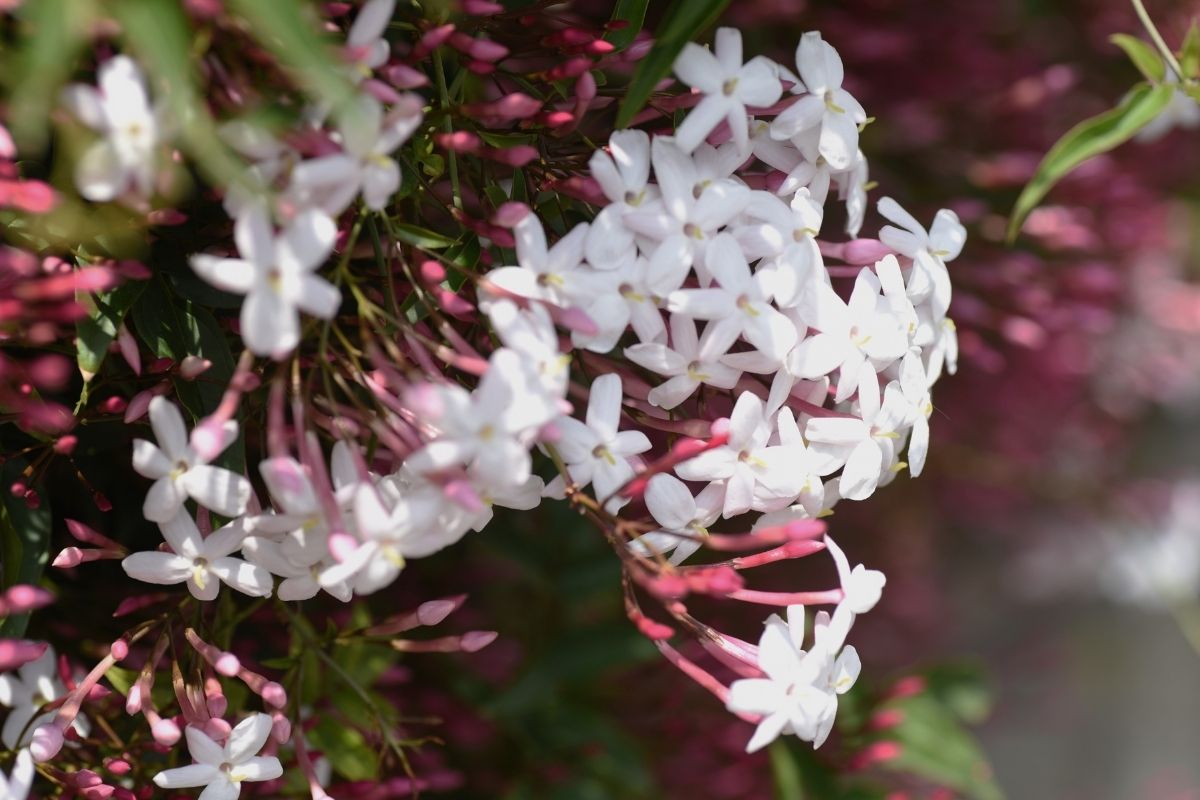
Another fast-growing variety of jasmine, the pink variety, are set apart by their distinct color.
Whilst most other varieties of jasmine grow small flowers that are usually white, this variety typically comes in a very light pink color, making them instantly recognizable when compared to their related flower species.
A pink jasmine plant is a low-growing evergreen shrub that grows up to about 6 to 7 feet tall and wide with proper care, a very similar height when compared to other species of jasmine.
The flowers bloom between April and June, depending on location and weather conditions. These attractive fragrant blooms come in shades of white, pink, and red.
10. Italian Jasmine
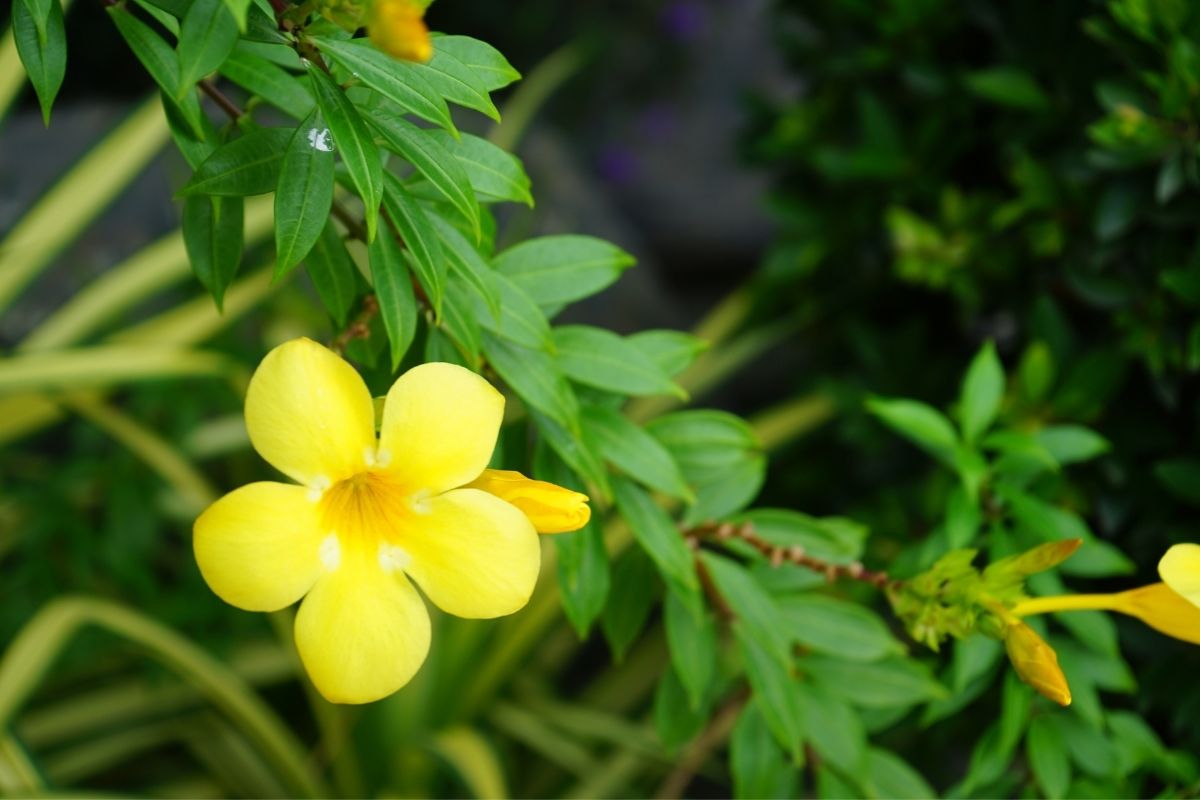
Despite being natives of much of Asia, there are many variants of the jasmine flower that have either come from or have been grown and naturalized to the surrounding areas. The Italian Jasmine is a perfect example of this.
Italian jasmine plants are beautiful flowering shrubs that grow well indoors. They are popular indoor plants for their lovely flowers and fragrant leaves.
They require little care and are easy to maintain. Their flowers come in many colors, such as white, pink, purple, red, blue, yellow, orange, and green.
In addition to their beauty, these plants are useful for their medicinal properties. Jasmine tea helps treat anxiety, stress, insomnia, and depression.
The plant also helps relieve pain caused by arthritis, muscle spasms, backaches, menstrual cramps, headaches, and migraines. It may also improve skin conditions.
Jasmine oil is used to treat acne, eczema, psoriasis, and other skin problems.
11. Lemon-Scented Jasmine

Being a native of the Portuguese islands of Madeira, this variety of jasmine is probably one of the most westerly variants on the planet.
As the name would suggest, this variety of jasmine releases a strong scent of citrus when it blooms.
This jasmine plant produces small white flowers that bloom between July and August. Each blossom contains hundreds of tiny petals that open into round yellow stamens.
Because of their unique scent, this variety of jasmine is grown and cultivated around the world.
However, because it is a very sensitive species that cannot survive temperatures below freezing, it is usually grown in greenhouses when it is cultivated away from the tropics.
Conclusion
So, there you have it! As you can see, there are so many kinds of Jasmine plants that grow around the world. So many different varieties of colors, flower shapes, even how their stems grow.
They all have something special about them that makes each one worthy of your attention. There isn’t really anything like them.
Editor’s Recommendations
27 Amazing African Violet Plants (With Pictures)







